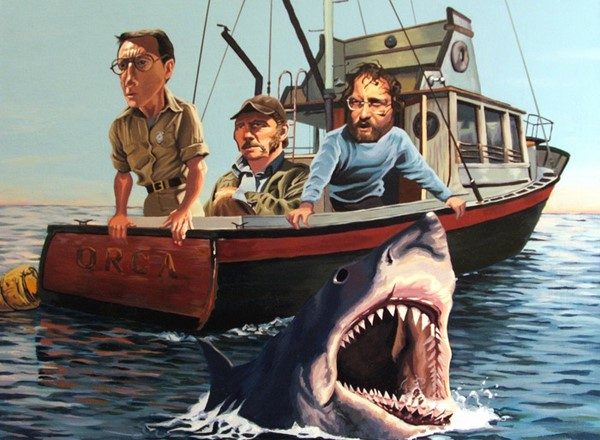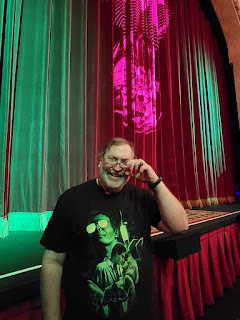As hard as it is for me to believe, I do not have a post on the original John Carpenter Halloween from 1978. I have seen this movie almost every year for twenty years at least, and I guess I never had the chance to go back and see it on the big screen until now. It seems like there must have been a Fathom Event Screening, but I looked on the site here and found nothing. So thank you Paramount Theater for giving me this opportunity.
Although not the first “slasher” horror film, that title must belong to “Psycho”, John Carpenter’s Halloween defined the genre in the late 70s and for the last fifty years has been the template for all the subsequent slasher films around. Obviously, the title “Halloween” helps make this a perennial, something it most certainly not have achieved under the original title “The Babysitter Murders”. So much care was taken to set up the characters who are being stalked, it is different that almost all the subsequent films which make the victims into nearly nameless notches on the knife, axe, chainsaw of the killers in later films. The three main girls are introduced and each gets some moments to be a real teenager, before they become the target. Laurie, Annie and Lynda are average girls, with love lives that vary from the raucous to the non-existent. In the end it is Laurie, the virginal Jamie Leigh Curtis who survives and is remembered, but Annie had a well developed suspense scene in the film that is just as effective as the climax moments, at drawing a scared response from the audience.
Donald Pleasance is a little crazed as Dr. Loomis, although from what he knows, it is perfectly understandable. His sense of urgency does carry the pacing of the film in some of the spots where the killer is not on screen or actively pursuing he girls. I was a little nonplussed at the reaction of some of the audience at the screening. They seemed unable to adjust their post modern sensibilities to the late seventies context. They have seen scream too many times to know that the reason that meta narrative exists at all is that the original films took place. I felt a little like Randy at the party, I know the rules and why they existed in 1978, but no one else seemed to care. They did still appreciate the film, but I could not understand why they laughed at some of the moments in the film that are frightening or serious.
Anyway, I found the movie to be continuously compelling, and well shot, utilizing locations in Southern California that I grew up in as Haddonfield, Illinois. Michael Myers becomes an iconic masked killer and there is a long line of slashers that followed in his wake.
Director Robert Rodriguez was presenting the film with a surprise second feature, which was only revealed at the screening. It turned out he was planning a Carpenter double feature, by including Carpenter’s next Theatrical Feature “The Fog”
I saw “The Fog” in it’s original release and I have always liked the movie. It is a ghost story, told as a ghost tory with malevolent forces returning to wreak vengeance on the descendants of those who wronged them.
I like the fact that not everyone who gets murdered by the ghosts, deserves their fate. After all, furious spirits from beyond the grave are not always reasonable. This film puts Jamie Leigh Curtis in the story, but she is not really the star. If there is a featured performer it is the then wife of the director, Adrienne Barbeau. She plays the evening DJ at the local radio station and her studio is at a high point in the seaside community, so she can see the dangerous fog coming off the ocean, and she directs people to flee when it is clear that the fog contains the ghosts that have returned for their justice.
Jamie Leigh’s Mom, Janet Leigh, is also in the picture, a nice bit of stunt casting but not one that was essential. Carpenter made running from the weather much more thrilling than Shyamalan did in “The Happening”. It is a lot scarier to have the fog manifest as dead sailors bent on killing, than leaves blowing in the wind.
I can’s say it all makes sense, but I like the fact that Tom Atkins gets played as a sex symbol and John Houseman tells a scary story to kids on the beach. All in all it was a ton of fun.










